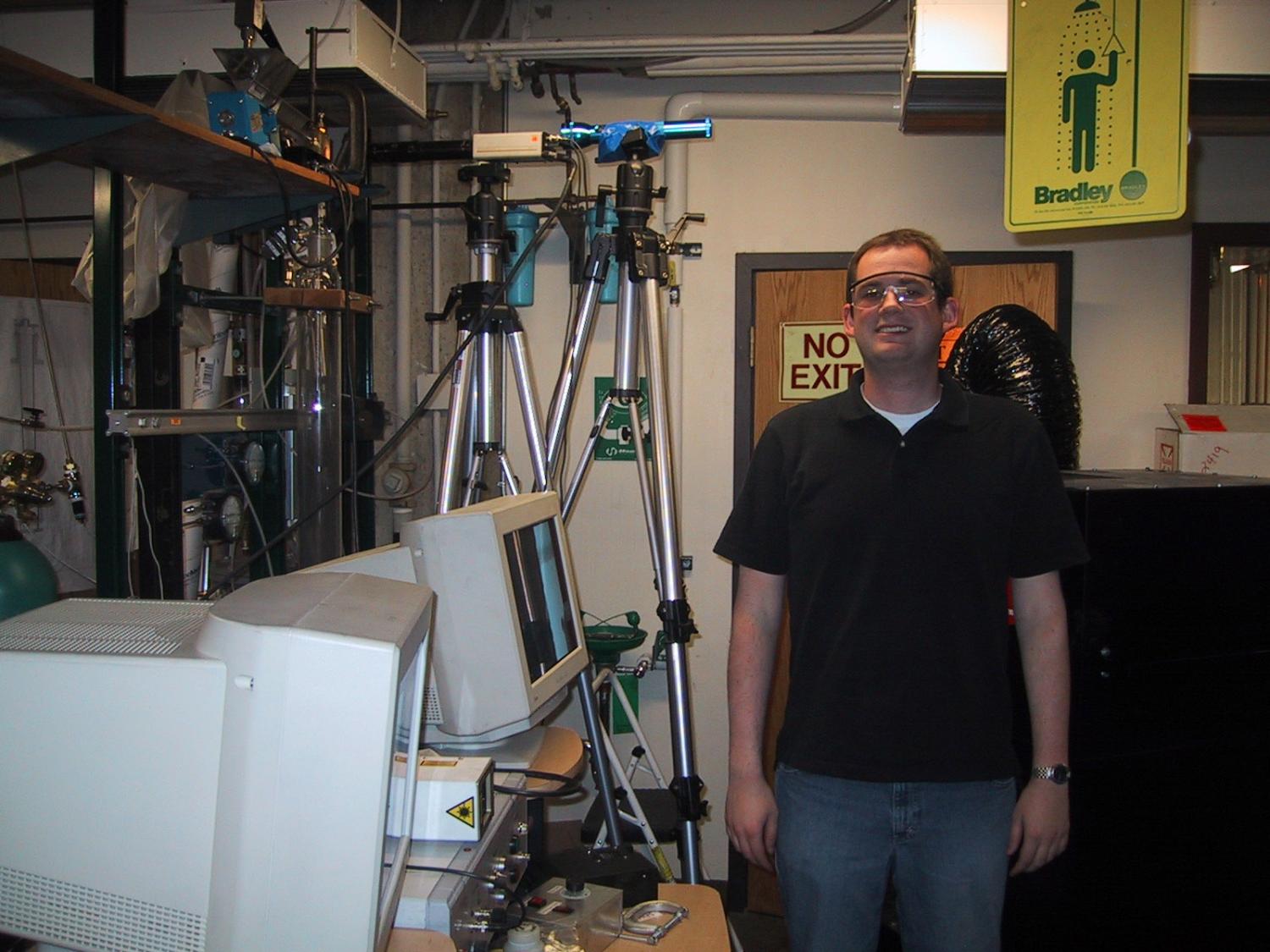Todd Francis
- Graduate Research Assistant
- SOLAR THERMAL HYDROGEN PRODUCTION
Education
- Ph.D., Chemical Engineering, University of Colorado Boulder (2008)
- M.S., Chemical Engineering, University of Colorado Boulder (2005)
- B.S., Chemical Engineering, University of Michigan (2002)
"Dissociation of Mn2O3 for water-splitting cycles"
The objective of my project is to develop a fundamental understanding of the dissociation of Mn2O3 particles in a solar-thermal fluid-wall aerosol flow reactor. The research has three key thrusts: (1) feeding a dispersed cloud of feed particles into a transport tube reactor, (2) kinetics of rapid Mn2O3 dissociation, and (3) modeling of the solar-thermal reactor, including heat transfer processes. The Mn2O3 dissociation is the first step in a three step manganese-oxide based water splitting cycle (4):
½Mn2O3→ MnO + ¼ O2 (1)
MnO + NaOH → ½ H2 + NaMnO2 (2)
NaMnO2 + ½ H2O → ½ Mn2O3 + NaOH (3)
---------------------------------------------------
H2O → H2 + ½ O2 (4)
Mn2O3 particles are fine cohesive particles and will tend to aggregate into larger particles when fed, unless they are dispersed well as they are fed into the reactor tube. Larger aggregates will not have sufficient residence time in the transport tube (fractions of a second to seconds) to be heated throughout and the kinetic studies will be hindered by heat transfer limitations. Using a high inert gas flow to shear the powder as it exits the feeding tube will limit throughput of the reactor by reducing the available residence time. To accomplish the project’s objective of understanding intrinsic kinetics, it is necessary to incorporate a feeder design that will allow non-aggregated particles to be fed. The dispersion of the solids being fed is preferably done without using a high gas flow rate which would limit residence time. Hence, the first aspect of this project is to develop a fundamental understanding of such a solids feeding system. The particle feeding system is modeled physically to determine how the intermolecular forces between particles are being reduced so as to disperse the feed solids as a dust cloud.


